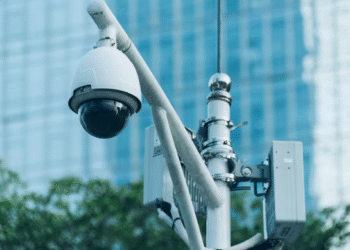Flickering laptop screens can prove distracting and irritating, particularly when you’re not working, learning meticulously or seeing a significant thing.The problem may be as minor as an error on the screen or a significant hardware failure. The reasons why the display in your laptop is flickering enables you to know the correct solution in a short period of time. The problem could be caused by old software, broken cables or display drivers and that, the sooner the problem is solved, the better you would be guaranteed of smooth operations and that you would not suffer the losses in the long run as far as your device is concerned.
What Causes Laptop Display Flickering
There might be multiple reasons your laptop screen ought to be beginning to flicker. Up-to-date or damaged graphics drivers are the most frequent. Display drivers that are not updated may even find it difficult to control the graphics output and hence they do not provide a steady screen performance. The other potential cause of a flickering problem with the display on a laptop is hardware damage like a loose display cable or a faulty backlight. Sometimes, screen flickering may also be caused by software incompatibility or wrong brightness settings. The problem of identifying its source is the initial step towards resolving the problem.
Software-Related Causes
The majority of flickering problems are associated with the software. The primary cause is usually obsolete or outdated display drivers. In order to correct this, open the device manager and find the display adapter and update it with the newest driver. In case the updating fails, uninstall and install the driver again. The other cause of the flickering display on the laptop may be the conflict of software with the programs that may regulate brightness or display color. Safe mode can be used to run your laptop to see whether the third party program is the cause of the problem.
Hardware-Related Causes
Still having a flickering screen after updating to software, then the problem may be a hardware one. The laptop screen and the motherboard may lose their connection with time particularly when the laptop has been dropped or moved around a lot. The internal video cable can be required to be changed or adjusted. Flickering may also be caused by a broken display panel or broken backlight. In all cases where the problem of flickering of the laptop display is associated with a hardware device, then it is advisable to call the technical officer who may examine the inside parts safely and fix the problem.
Checking Display Settings
Flickering can also be caused by the incorrect display settings. A low refresh rate may cause your screen to look like it is unstable. Go to your display settings and make sure that the refresh rate is adjusted to your model of the laptop. A flickering effect can also be caused by brightness levels which vary automatically. Turn off automatic brightness control when you find that it is automatically adjusting the brightness. Sometimes tweaking of these settings can clear the problem of flickering display on the laptop without taking any additional technical measures.
External Connections and Peripherals
Sometimes, flickering is a phenomenon that happens to your laptop computer once you connect it to an external monitor / device. Faulty HDMI or VGA connection cables can disrupt the signal and cause the instability of the display. Use another cable or another monitor to see whether the problem is the same or not. The remedy in case the flickering occurs solely when using one specific connection is to replace the cable or port adaptor. This is a fundamental explanation why a large number of users have entirely neglected the problem of flickering display on the laptop simply because they believe it is internal but it could be merely a loose connection or a faulty connection.
Preventive Maintenance Tips
The simplest way of avoiding screen flickering is to keep the software of your laptop up to date. Always update your operating system, display drivers and firmware. Do not install un-verified programs which may interfere with graphics preferences. Clean your laptop and do not overstretch the hinges and screen. Assuming that you are using your laptop on a long basis, take small breaks in order to avoid overheating that may exacerbate flickering. Conventional care and maintenance will minimize the possibility of the future occurrence of a laptop display flickering issue.
When to Seek Professional Help
Once you have tried the settings, updated drivers and checked cables but still the issue persists, then you need professional assistance. A trained technician will be able to service the problem to identify the internal parts such as the motherboard, the graphics card, or the screen panel. Leaving the issue of laptop display flickering too long may cause additional losses and expensive repairs. Professional service guarantees that the issue is resolved and in the right way and order, and your laptop will be functional and display clear.
Conclusion
You will lose your laptop unless you act upon it because a flickering screen will spoil your productivity and destroy your laptop. You can do the right thing to fix it with the knowledge of the most common causes be it the software, hardware or connection related-ones. Most of the time, the problem of flickering displays of the laptop can be resolved by simply updating the drivers and checking the cables and adjusting the settings. Chronic issues, in their turn, should be repaired by professionals. Keeping your laptop well attended, updated and maintained in an orderly fashion can keep your laptop ready to deliver undistorted, stable and quality performance on display on a daily basis. For more information: +97145490505






